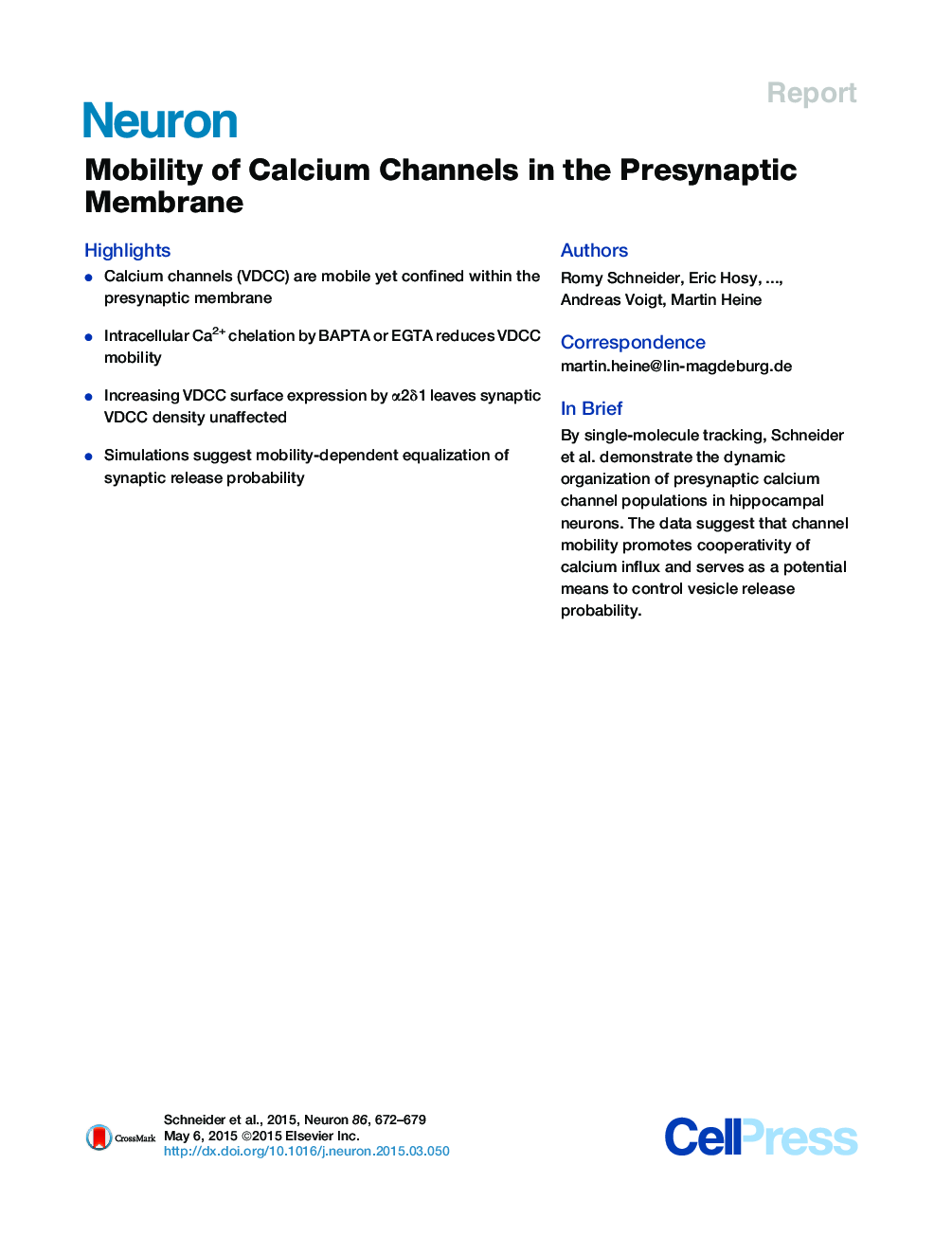| Article ID | Journal | Published Year | Pages | File Type |
|---|---|---|---|---|
| 4320930 | Neuron | 2015 | 8 Pages |
•Calcium channels (VDCC) are mobile yet confined within the presynaptic membrane•Intracellular Ca2+ chelation by BAPTA or EGTA reduces VDCC mobility•Increasing VDCC surface expression by α2δ1 leaves synaptic VDCC density unaffected•Simulations suggest mobility-dependent equalization of synaptic release probability
SummaryUnravelling principles underlying neurotransmitter release are key to understand neural signaling. Here, we describe how surface mobility of voltage-dependent calcium channels (VDCCs) modulates release probabilities (Pr) of synaptic vesicles (SVs). Coupling distances of <10 to >100 nm have been reported for SVs and VDCCs in different synapses. Tracking individual VDCCs revealed that within hippocampal synapses, ∼60% of VDCCs are mobile while confined to presynaptic membrane compartments. Intracellular Ca2+ chelation decreased VDCC mobility. Increasing VDCC surface populations by co-expression of the α2δ1 subunit did not alter channel mobility but led to enlarged active zones (AZs) rather than higher channel densities. VDCCs thus scale presynaptic scaffolds to maintain local mobility. We propose that dynamic coupling based on mobile VDCCs supports calcium domain cooperativity and tunes neurotransmitter release by equalizing Pr for docked SVs within AZs.
